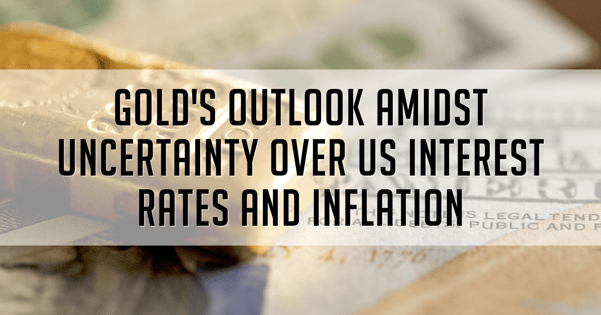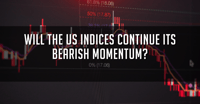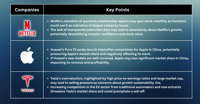Gold, a traditional safe-haven asset, is facing a shift in its outlook as traders re-evaluate their optimism regarding the potential peak of US interest rates. Recent reports suggesting that the Federal Reserve may need further measures to tame inflation have cast doubt on the previous market sentiment.
The surge in US consumer sentiment and a subsequent spike in Treasury yields have weighed on gold, which lacks interest-bearing qualities. Additionally, the prospect of more rate hikes has added pressure on the precious metal. Swaps pricing indicates expectations of a 25-basis point increase in the Fed's benchmark rate during the upcoming meeting.
Federal Reserve policymakers are poised to resume raising interest rates this month and remain open to further increases later in the year. While encouraged by a slight decrease in price pressures, officials are cautious about prematurely declaring an end to their battle against persistent inflation. The memory of the 1970s, when the Fed eased its efforts to contain inflation only to witness a resurgence of double-digit price increases, contributes to their current cautionary stance.
A significant drop in inflation was reported last month, with consumer prices rising by 3% in June compared to 4% in May. This marked the smallest increase over two years and was well below the 9.1% surge observed just a year ago. The decline in inflation has raised hopes that the central bank can achieve a "soft landing" for the economy, effectively reducing inflation without triggering a recession. However, Fed officials remain wary of concluding a single data point, given past experiences of temporary relief followed by renewed price pressures.
In June, the Federal Reserve decided to maintain interest rates at their current level after ten consecutive rate hikes, bringing the range from 5% to 5.25%. Based on projections released after their June gathering, most policymakers anticipated two additional rate increases of a quarter-point each by the end of the year.
As the upcoming meeting approaches, various officials have reiterated this view while emphasising that the final decision will depend on the evolving state of the economy. However, caution remains prevalent among Fed officials, including Chair Jerome Powell, who believe it is premature to declare an all-clear signal following the banking turmoil earlier in the year.
The Fed's primary mandate is maintaining price stability and promoting maximum employment. Recently, inflation has been a persistent concern, prompting the central bank to adopt a more hawkish stance. The COVID-19 pandemic further complicated the economic landscape, leading to unprecedented monetary stimulus measures to support the economy.
While the recent drop in inflation is encouraging, Fed Governor Christopher Waller emphasises the need for sustained improvement before confidently concluding that inflation has decelerated. He points out that inflation briefly slowed during the summer of 2021 before worsening again, highlighting the importance of long-term trends rather than isolated data points.
The Fed's approach to interest rate hikes and inflation management is influenced by historical lessons. The 1970s served as a stark reminder of the consequences of prematurely easing efforts to contain inflation. The subsequent reacceleration of price increases into double-digit levels severely implicated the economy. To avoid repeating this mistake, the current cautious stance of the Federal Reserve is understandable.
Gold, often considered a hedge against inflation and economic uncertainty, has faced headwinds due to the prospect of rising interest rates. As interest rates increase, the opportunity cost of holding non-interest-bearing assets like gold rises, making them less attractive to investors seeking yield-generating alternatives. Consequently, the recent optimism surrounding US interest rates likely dampens gold's outlook.
The relationship between gold and interest rates is complex and multifaceted. While rising interest rates can exert downward pressure on gold prices, other factors such as inflation expectations, geopolitical tensions, and market sentiment also play significant roles in determining the precious metal's performance.
Inflation has historically been a key driver of gold prices. As inflation erodes the purchasing power of fiat currencies, investors often turn to gold as a store of value. However, the recent drop in inflation has somewhat alleviated concerns, leading to a re-evaluation of gold's role in portfolios.
The Fed's commitment to maintaining price stability and its battle against persistent inflation has implications for gold's outlook. If the central bank successfully manages to bring down inflation without triggering a recession, it could create a favourable environment for gold as a hedge against future uncertainties. On the other hand, any signs of the Fed losing control over inflation or adopting a more dovish stance could reignite inflationary fears and potentially boost gold prices.
Geopolitical tensions and market sentiment also influence gold prices. Uncertainties surrounding global trade, political conflicts, and economic downturns can drive investors towards safe-haven assets like gold. Additionally, market sentiment, investor risk appetite, and the overall health of financial markets can impact gold's demand and price dynamics.
Gold's outlook has become clouded by the re-evaluation of optimism over US interest rates and concerns about inflation. While encouraging, the recent drop in inflation is viewed with caution by Federal Reserve officials who remain vigilant in their battle against persistent price pressures. The memory of past mistakes and the desire to avoid a repeat of the 1970s inflationary period contribute to the careful stance of the central bank.
The relationship between gold and interest rates is complex, with rising rates posing challenges for the precious metal. However, other factors, such as inflation expectations, geopolitical tensions and market sentiment, also shape gold's performance. The Federal Reserve's ability to manage inflation without triggering a recession will be the crucial determining factor of gold's future trajectory.
As investors navigate the evolving economic landscape, they should closely monitor the Federal Reserve's monetary policy decisions, inflation trends, and geopolitical developments. These factors will continue influencing gold's outlook and its role as a hedge against inflation and economic uncertainties.
Fullerton Markets Research Team
Your Committed Trading Partner














